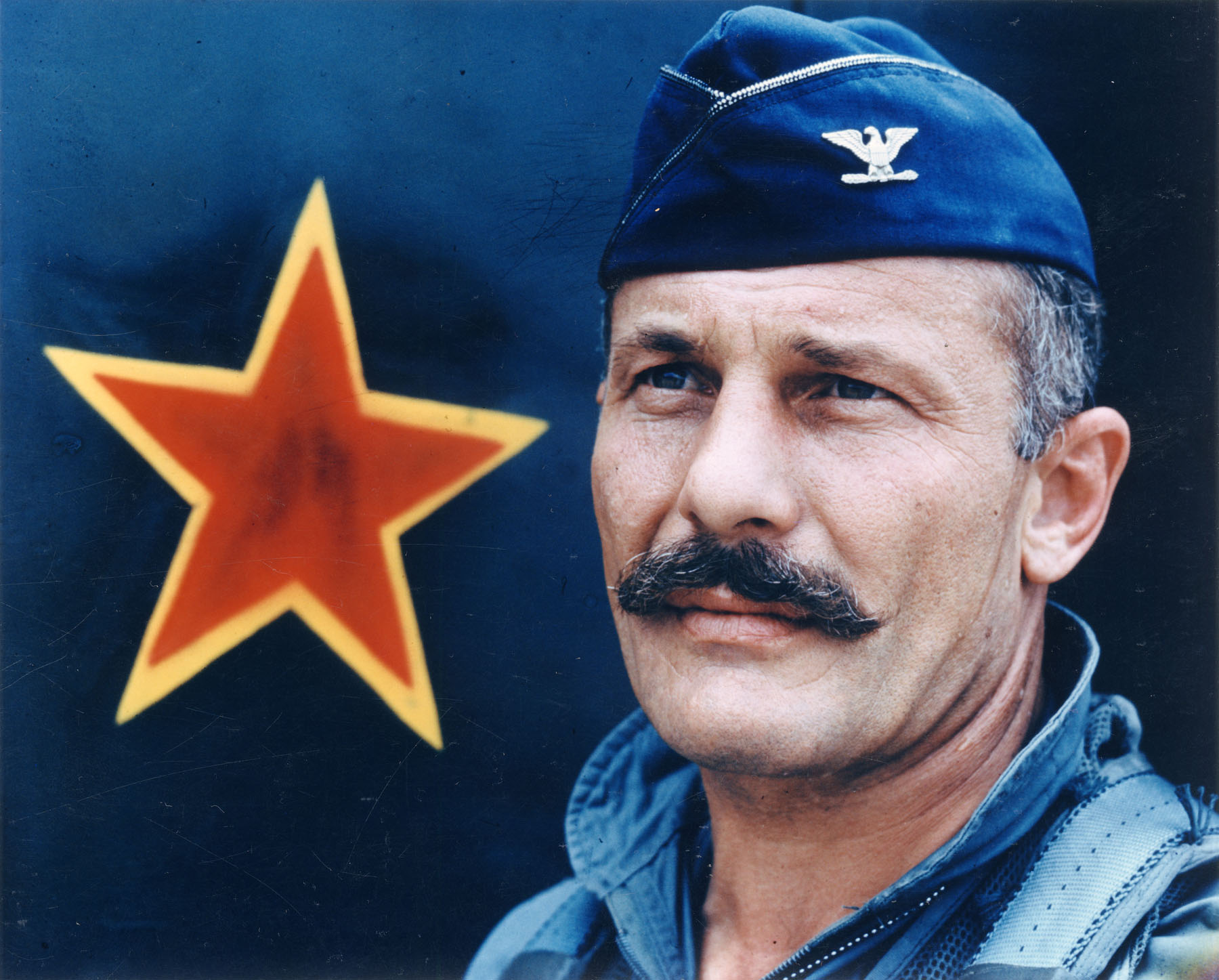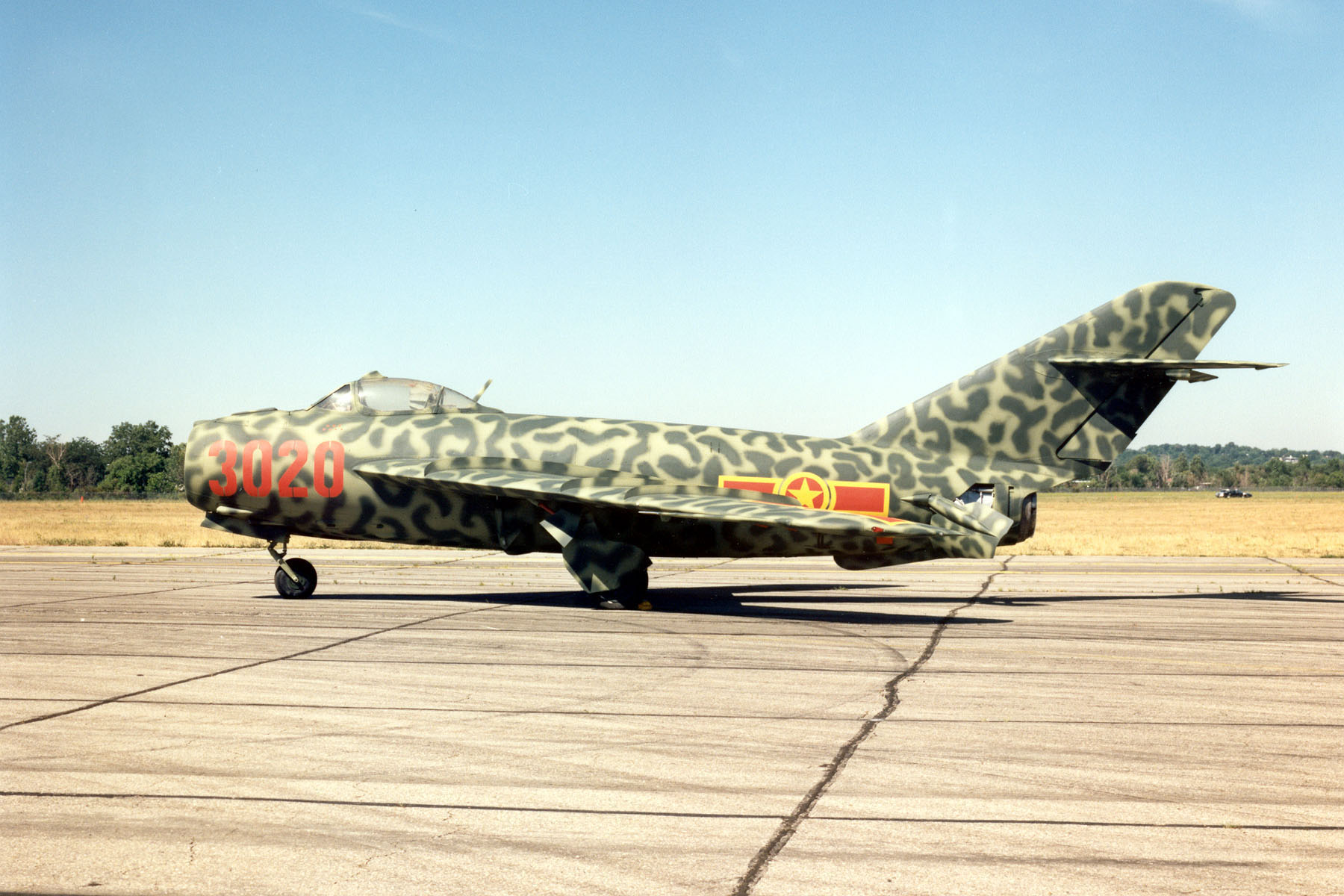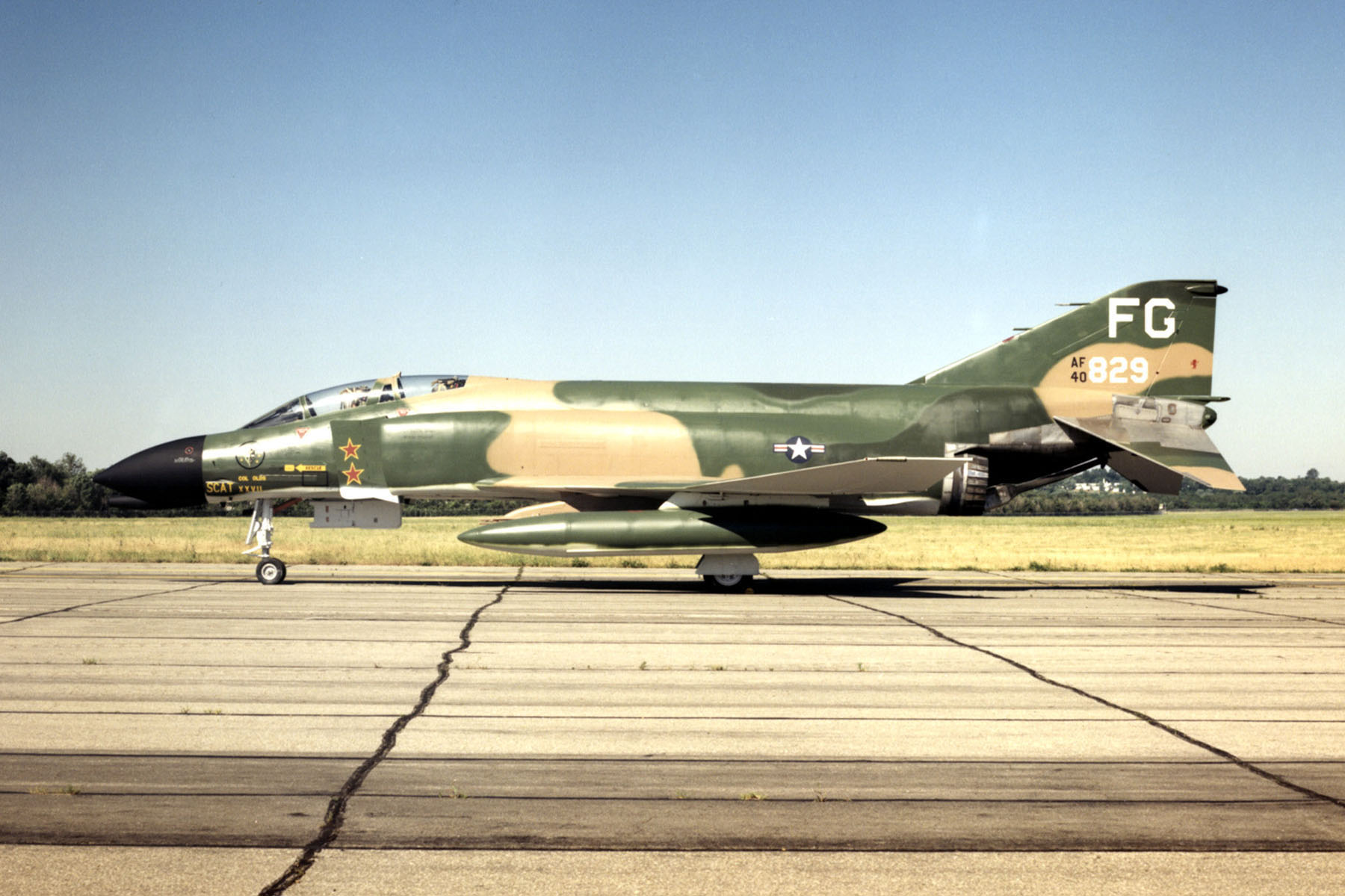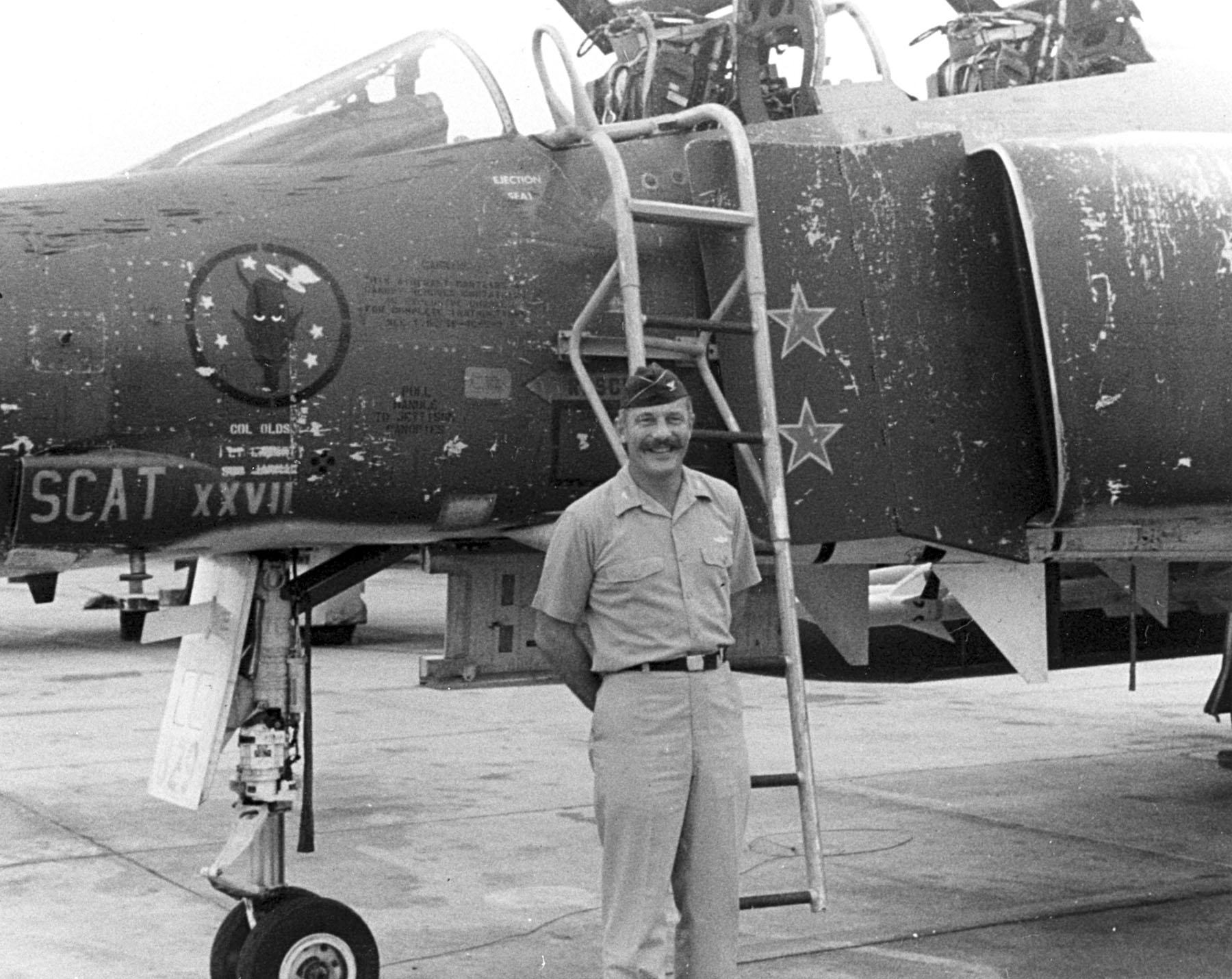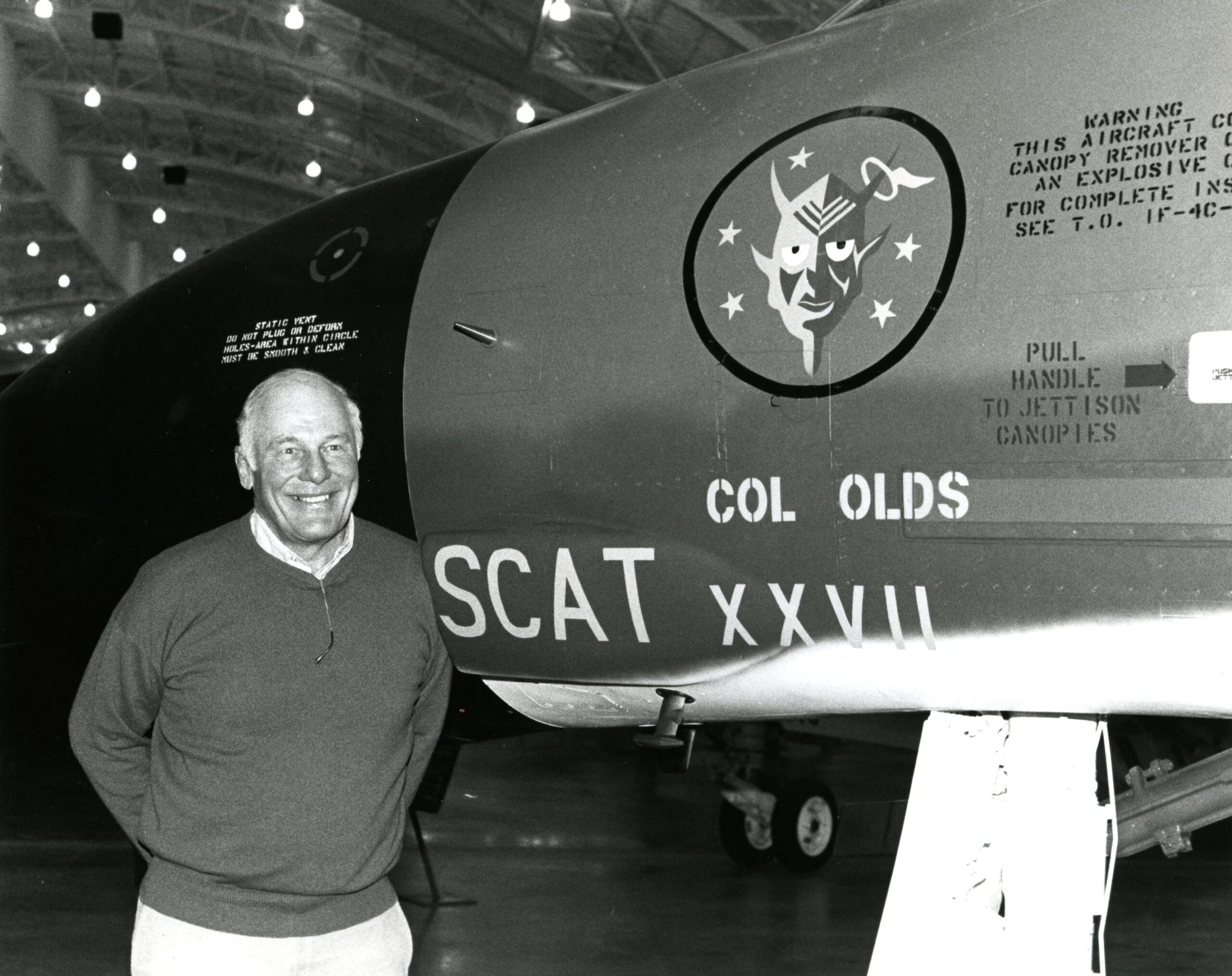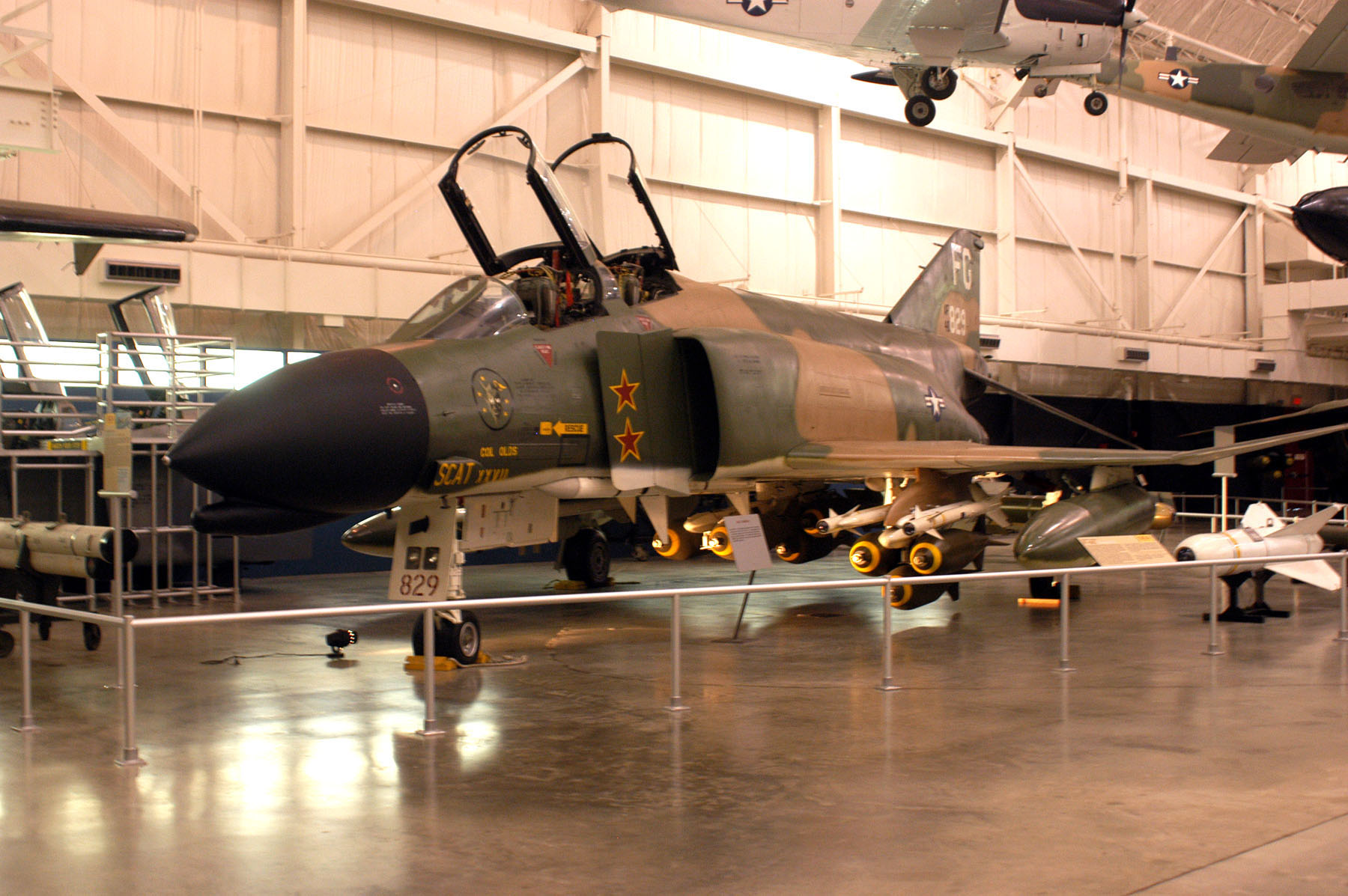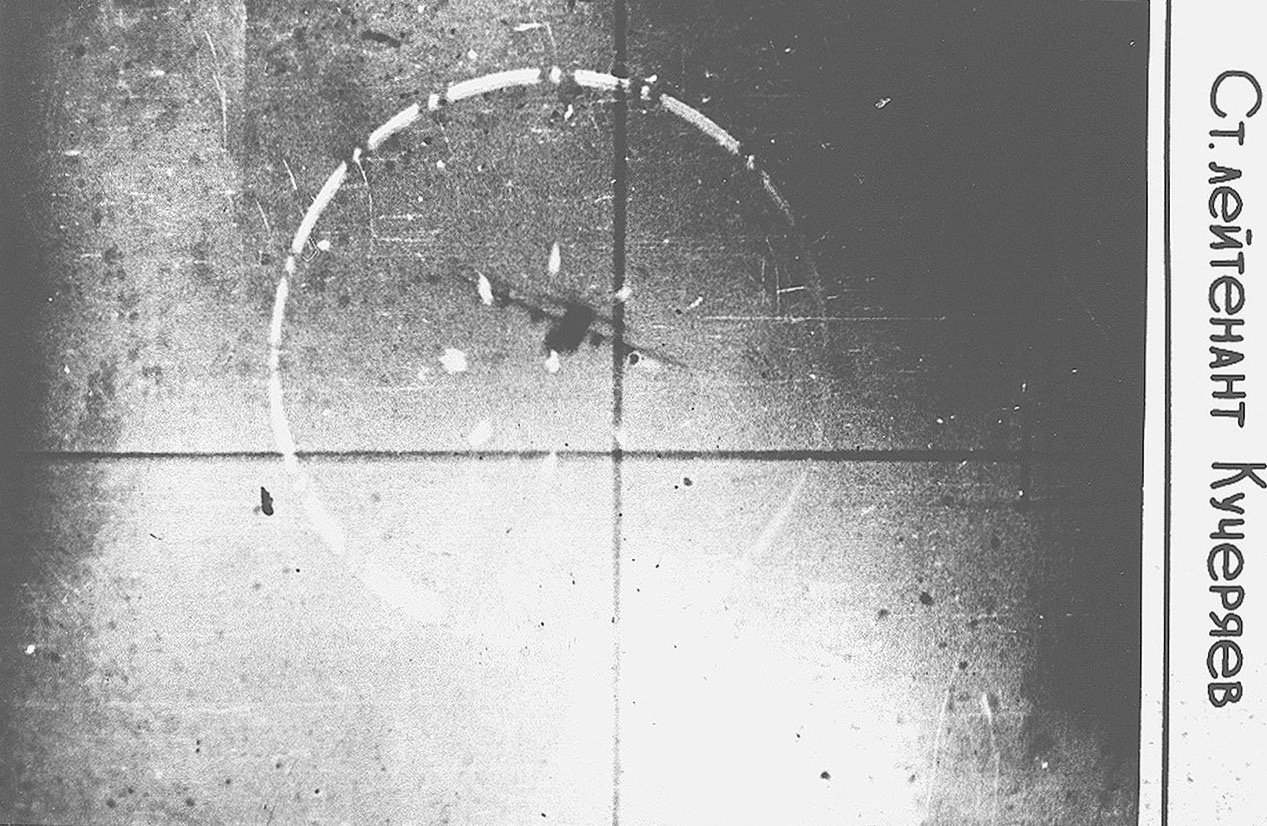
During the Cold War, the United States routinely flew reconnaissance missions around and over Soviet Bloc territory, including over the Soviet Union itself. There have been unconfirmed reports that as many as 40 U.S. aircraft were shot down, and more than 200 airmen killed. Several hundred more may have been captured and held as prisoners.
2 September 1958: A U.S. Air Force Lockheed C-130A-II Dreamboat, 56-0528 (MSN 182-3136) of the 7406th Support Squadron, based at Rhein-Main Air Base, near Frankfurt am Main, Germany, was on a clandestine reconnaissance mission near the Union of Soviet Socialist Republics (USSR) border with Armenia (a Soviet Block nation). The C-130 had departed from the U.S. air base at Incirlik, Turkey. In addition to the 6-man flight crew, the aircraft carried 11 radio operators and technicians from the 6911th Radio Group, Mobile.
Two 11th Air Army Mikoyan-Gurevich MiG 17s (NATO code name: “Fresco”), part of the Tbilisi Air Defense District, were dispatched from Leninakan (now known as Gyumri) to intercept and destroy the C-130. The radar interecept was controlled from Leninakan by Captain Romanyuta.
When the two fighters, piloted by Senior Lieutenant Kucheryaev (201) and Senior Lieutenant Ivanov (218), were delayed for 7 minutes by a dust storm, two more MiG 17s, piloted by Senior Lieutenant Lopatokov (582) and Lieutenat Gavrilov (583), were launched from Yerevan, the capital city of Armenia. (U.S. radar tracking reports indicate that 201 and 218 were airborne at 1152Z.) The weather was reported as good, with 2/10ths to 3/10ths (scattered) cloud cover.
The fighters closed on the C-130 and reported that it was flying at an altitude of 9,000–10,000 meters (29,528–32,808 feet). At 1213Z the fighters reported the C-130 at 10,000 meters (32,808 feet). Lieutenants Lopatokov and Gavrilov each made firing passes, with Gavrilov reporting that he fired three bursts. Next, Lieutenants Kucheryaev and Ivanov attacked. Lieutenant Kucheryaev reported that the C-130 started burning after his third burst. Lopatokov and Gavrilov attacked again.
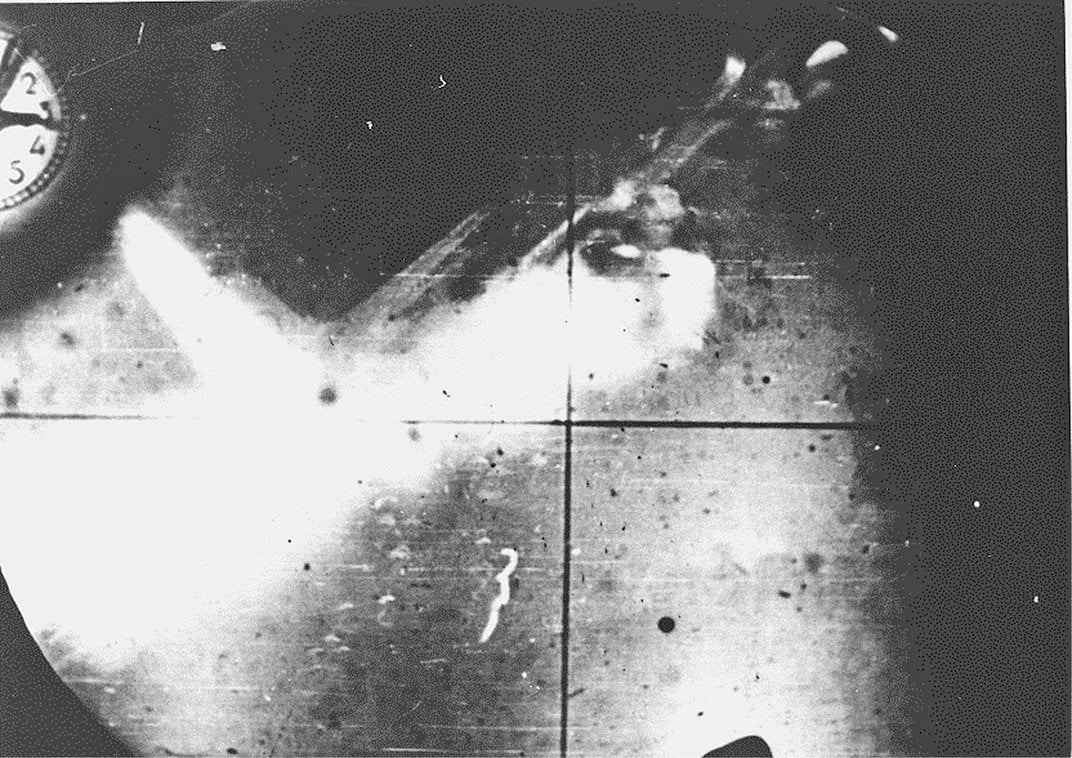
All four MiG 17s returned to the fighter base at Leninakan.
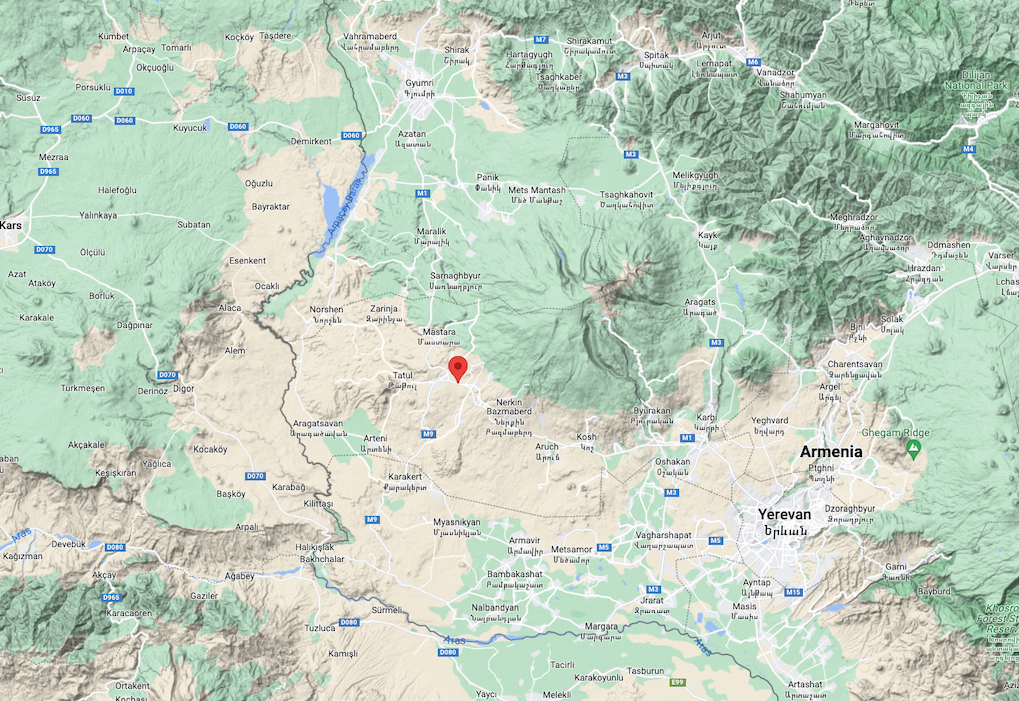
The Soviet radio communications during the intercept were heard by U.S. communications intelligence personnel.
News reports of the interecept appeared in Советская Авиа (Sovetskaya Aviatsiya) 19–29 September 1958.
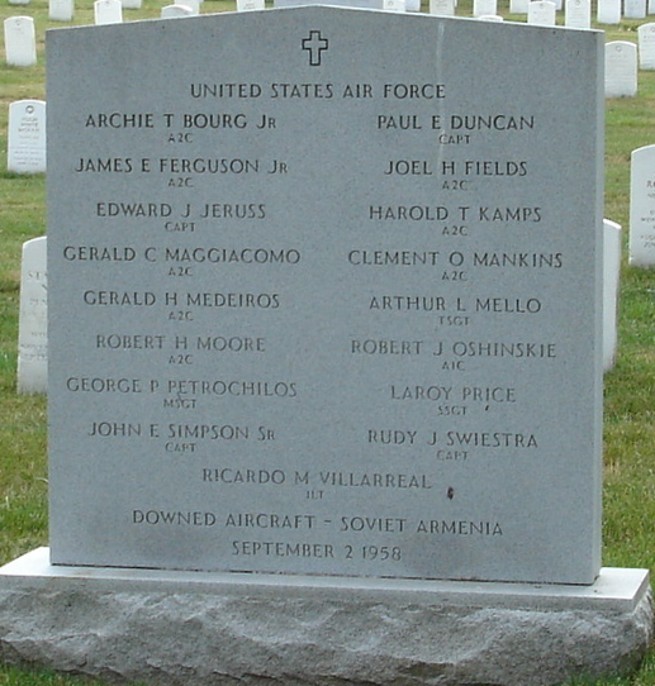
The remains of six of the air crew were returned to the United States.
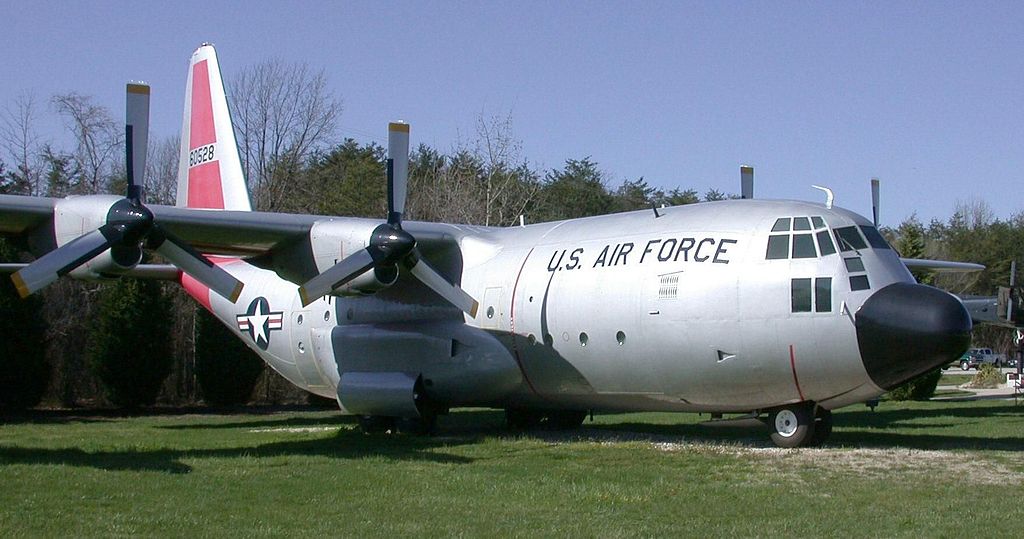
56-0528 was a Lockheed C-130A-8-LM Hercules which had been converted to a C-130A-II Dreamboat electronic surveillance configuration by the Texas Engineering & Manufacturing Company (TEMCO) under Project SUN VALLEY. It was flown by two pilots with a navigator and radar navigator, a flight engineer and scanner. There were ten radio operators and a radio repair technician.
The cargo compartment had been converted to three radio compartments. The two forward compartments each had voice intercept positions for four operators, while the third had only two. A galley and radio repair station were at the rear. There was an airline-style toilet. The aft cargo doors were permanently closed and sealed. Radio antennas were installed in fiberglass pods resembling fuel tanks, mounted between the inboard and outboard engines. In the aircraft’s nose was the AN/APN-59 navigation, search, and weather radar. The aircraft was equipped with four alternators to supply electrical power for the equipment.
The Lockheed C-130A Hercules is a four-engine high-wing transport. It was normally operated by a crew of four. The C-130A was 97.8 feet (29.81 meters) long with a wingspan of 132.6 feet (40.42 meters), and height of 38.1 feet (11.61 meters). The total wing area was 1,745.5 square feet (162.16 square meters). The transport’s empty weight was 59,164 pounds (26,836 kilograms) and takeoff weight, 122,245 pounds (55,449 kilograms).
The C 130 has a rear loading ramp for vehicles, and there is a large cargo door on the left side of the fuselage, forward of the wing, The transport’s cargo compartment volume is 3,708 cubic feet (105.0 cubic meters). It could carry 35,000 pounds (15,876 kilograms) of cargo.
The C-130A was equipped with four Allison T56-A-1A turboshaft engines, driving three-bladed propellers. The engines produced 3,094 shaft horsepower at 13,820 r.p.m. (continuous), and 3,460 horsepower, Military Power (30-minute limit) or Takeoff ( 5-minute limit).
The C-130A had a cruise speed of 286 knots (329 miles per hour/530 kilometers per hour) and maximum speed of 326 knots (375 miles per hour/604 kilometers per hour) at 24,200 feet (7,376 meters). Its range with a 35,000 pound (15,876 kilograms) payload was 1,835 nautical miles (2,112 statute miles/3,398 kilometers). The initial rate of climb at Sea Level was 4,320 feet per minute (21.95 meters per second). The combat ceiling was 38,700 feet (11,796 meters).
In addition to its basic role as a transport, the C-130 has also been used as an aerial tanker, a command-and-control aircraft, weather reconnaissance, search and rescue, and tactical gunship. It has even been used as a bomber, carrying huge “Daisy Cutters” to clear large areas of jungle for use as helicopter landing zones, or, more recently, the Massive Ordnance Air Blast “mother of all bombs.” The aircraft has been so versatile that it has served in every type of mission. Over 40 variants have been built by Lockheed, including civilian transports. It is in service worldwide.
The prototype YC-130 first flew 23 August 1954. The first production C-130A made ts first flight 7 April 1955. The latest version is the Lockheed C-130J Hercules. After 69 years, the C-130 is still in production, longer than any other aircraft type.
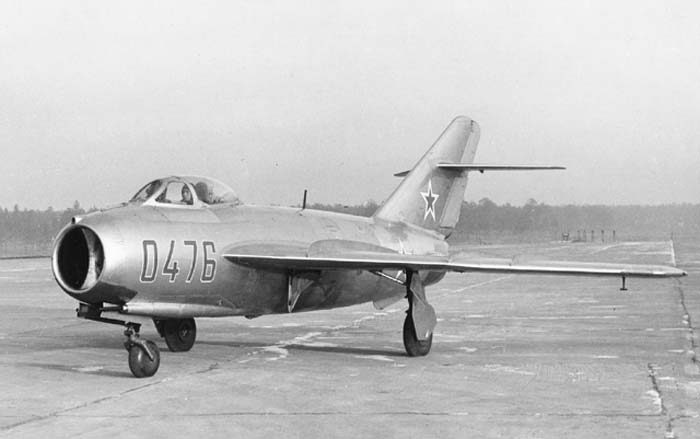
The Mikoyan-Gurevich MiG 17 is an improved version of the MiG-15 fighter. It is a single-place, single-engine, swept-wing, high-subsonic interceptor.
The MiG 17’s wing is thinner, stiffer, and more highly swept than the wing of the MiG 15. There are three stall fences on the upper surface of each wing. The wings are mounted at mid-fuselage with -3° anhedral. The leading edges of the inboard sections ares swept aft to 45° while the outboard sections are swept 42°.
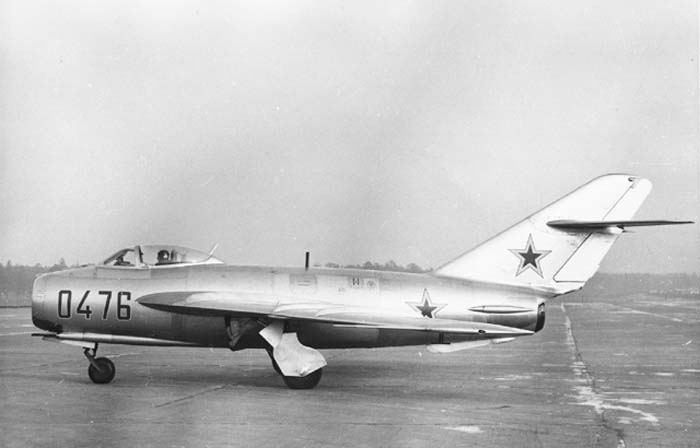
The MiG 17 is 11.364 meters (37 feet, 3.4 inches) long, with a wingspan of 9.600 meters (31 feet, 5.95 inches), and height of 3.800 meters (12 feet, 5.6 inches). It has an empty weight o f3,939 kilograms (8,684 pounds). The normal takeoff weight is 5,340 kilograms (11,773 pounds), and the maximum takeoff weight (MTOW) is 6,069 kilograms (13,380 pounds).
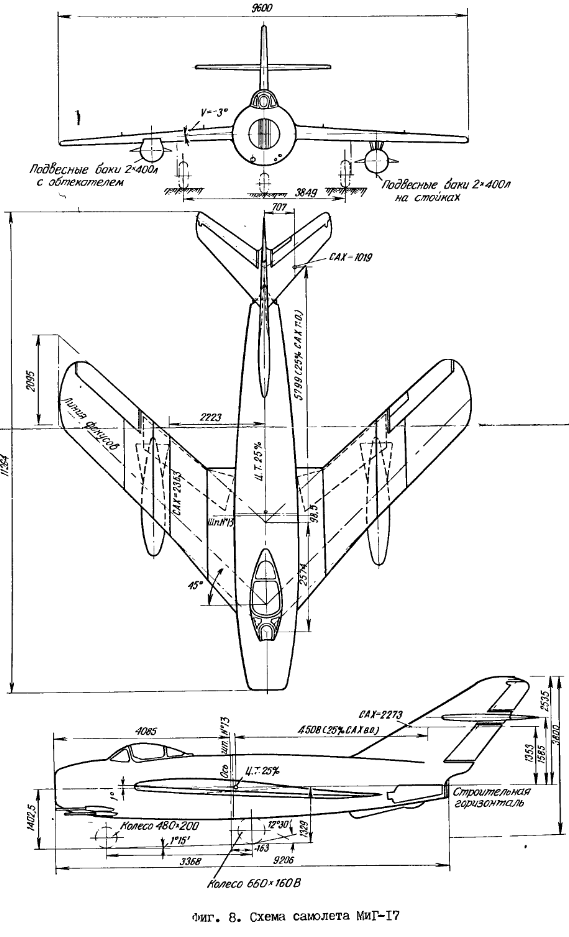
The MiG 17 is powered by a Klimov VK-1F centrifugal-flow turbojet. The basic VK-1 was developed from the Rolls-Royce Nene. The British engines were reverse-engineered by Vladimir Yakovlevich Klimov and manufactured at Factory No. 45 in Moscow as the Klimov VK-1. The VK-1 had a single-stage centrifugal-flow compressor, 9 combustion chambers and a single-stage axial-flow turbine. It produced a maximum 26.48 kilonewtons of thrust (5,952 pounds of thrust). The VK-1 was 2.600 meters (8 feet, 6.4 inches) long, 1.300 meters (4 feet, 3.2 inches) in diameter, and weighed 872 kilograms (1,922 pounds).
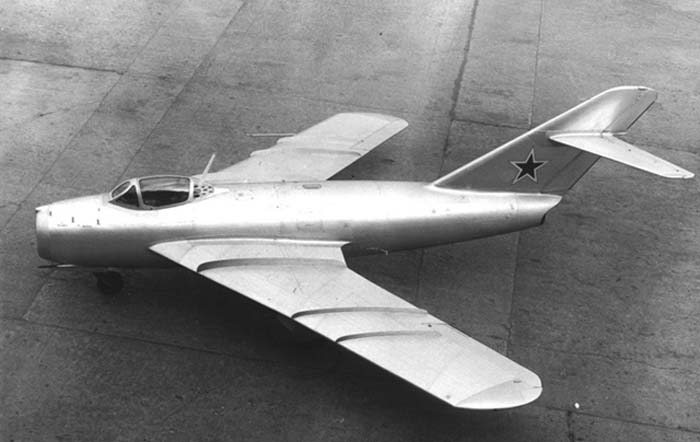
The maximum speed of the MiG 17 is 1,145 kilometers per hour (711 miles per hour). The interceptor has a practical range 1,240 kilometers (770 miles) and practical ceiling of 16,600 meters (54,462 feet). For high altitude missions, pilots wore a Zvezda VSS-04 pressure suit.
The MiG 17 was originally armed with two Nudelman-Rikhter NR-23 23 mm autocannons with 80 rounds per gun, and a single, NR-37 37 mm autocannon, with 40 rounds of ammunition. Later, it could be armed with two NR30 30 mm autocannons with 70 rounds per gun. This gun used 30x155mm high explosive or armor piercing ammunition. It has a rate of fire of 900 rounds per minute.
More than 10,000 MiG 17 fighters were built in the Soviet Union, Poland and China. The type remains in service with North Korea.
© 2023, Bryan R. Swopes
